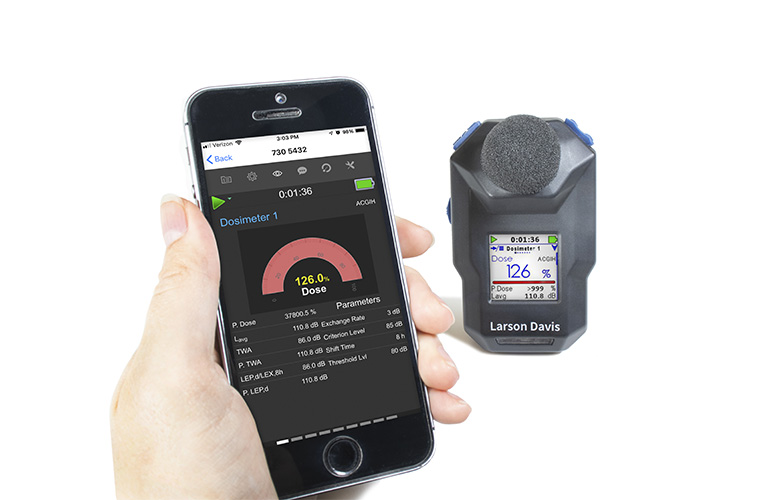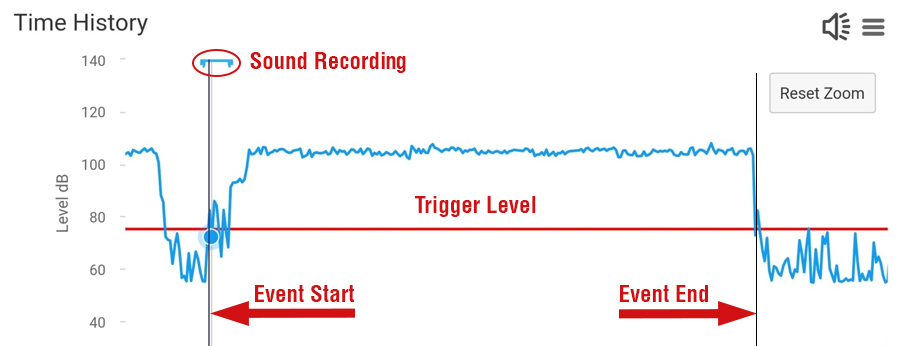Main Menu
- Home
- Products
- Applications
- Product Support
- Service
- Learn
- About Us
- Contact Us
 One of our teammates wore a Spartan™ Noise Dosimeter Model
730 to band practice and bravely shared this data with us. (He assures us that he'll be wearing hearing protection at practice from now on!) The Spartan was set up to record sound when LAS exceeded 75 dB (Trigger Source = LAS and Trigger Level = 75
dB). Sound recordings on the Spartan always last 12 seconds: 2 seconds of recording from before the noise level exceeded the threshold and 10 seconds after. Note that another recording will not begin until there is a new sound event. That is, until
the noise level dips below the threshold for longer than 1 second.
One of our teammates wore a Spartan™ Noise Dosimeter Model
730 to band practice and bravely shared this data with us. (He assures us that he'll be wearing hearing protection at practice from now on!) The Spartan was set up to record sound when LAS exceeded 75 dB (Trigger Source = LAS and Trigger Level = 75
dB). Sound recordings on the Spartan always last 12 seconds: 2 seconds of recording from before the noise level exceeded the threshold and 10 seconds after. Note that another recording will not begin until there is a new sound event. That is, until
the noise level dips below the threshold for longer than 1 second.

Even though the noise level gets much higher after the sound recording has ended, the event itself has not ended, and therefore a new sound recording does not begin. So, what we can hear in the recording is the bandmates talking before they begin playing. What we're actually interested in is what's going on when things get really loud - when the playing begins. In this case, the best way to set up the meter would be to set Trigger Level to 100 dB. That way, the event won't begin until the LAS is over 100 dB, and the audio recordings made will be of more interest.
Note that in addition to limiting sound recordings to once per event, there is a user-selectable parameter known as minimum interval. This is the minimum number of seconds between sound recordings. A longer minimum interval will reduce the overall number of sound recordings for the measurement and conserve dosimeter memory.
Check out this Tech Talk to understand the hows and whys of audio recording in noise dosimetry.